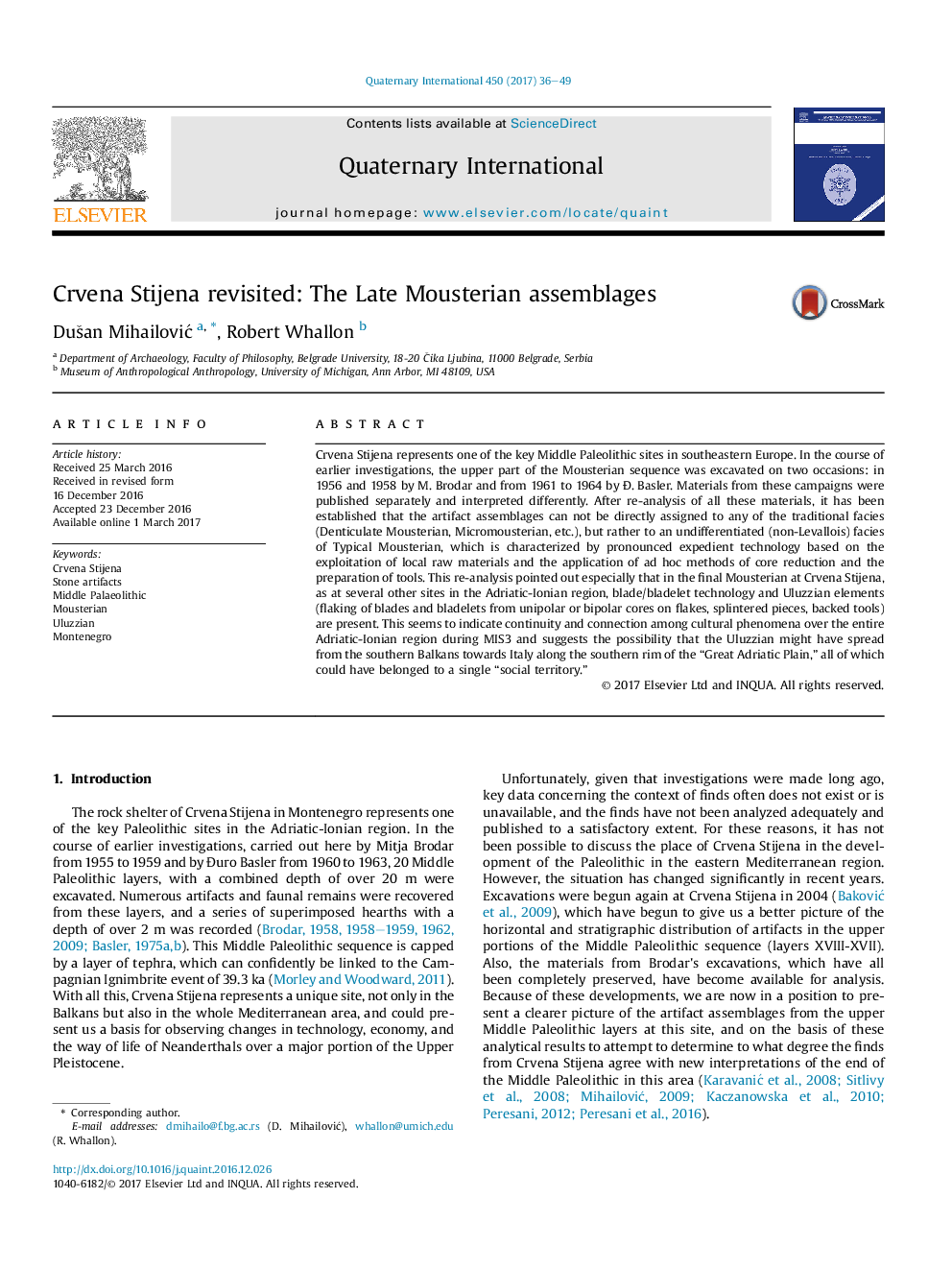| Article ID | Journal | Published Year | Pages | File Type |
|---|---|---|---|---|
| 5113190 | Quaternary International | 2017 | 14 Pages |
Crvena Stijena represents one of the key Middle Paleolithic sites in southeastern Europe. In the course of earlier investigations, the upper part of the Mousterian sequence was excavated on two occasions: in 1956 and 1958 by M. Brodar and from 1961 to 1964 by Ä. Basler. Materials from these campaigns were published separately and interpreted differently. After re-analysis of all these materials, it has been established that the artifact assemblages can not be directly assigned to any of the traditional facies (Denticulate Mousterian, Micromousterian, etc.), but rather to an undifferentiated (non-Levallois) facies of Typical Mousterian, which is characterized by pronounced expedient technology based on the exploitation of local raw materials and the application of ad hoc methods of core reduction and the preparation of tools. This re-analysis pointed out especially that in the final Mousterian at Crvena Stijena, as at several other sites in the Adriatic-Ionian region, blade/bladelet technology and Uluzzian elements (flaking of blades and bladelets from unipolar or bipolar cores on flakes, splintered pieces, backed tools) are present. This seems to indicate continuity and connection among cultural phenomena over the entire Adriatic-Ionian region during MIS3 and suggests the possibility that the Uluzzian might have spread from the southern Balkans towards Italy along the southern rim of the “Great Adriatic Plain,” all of which could have belonged to a single “social territory.”
